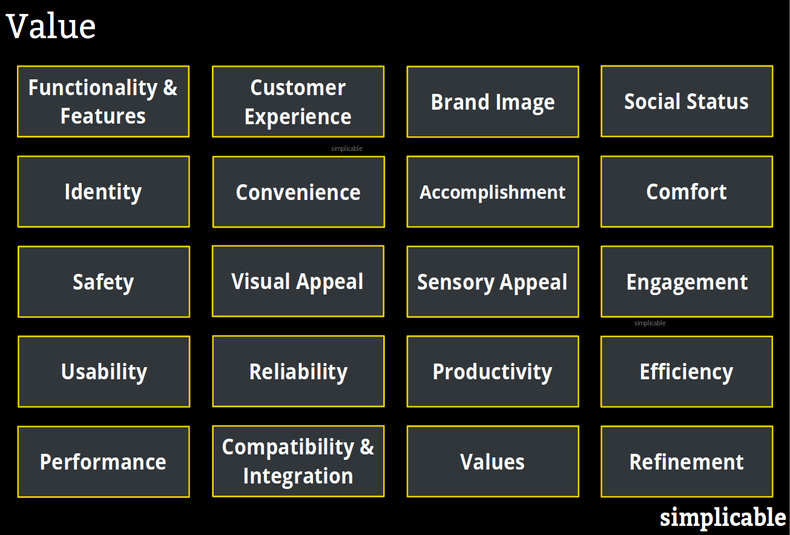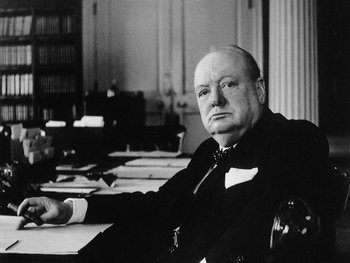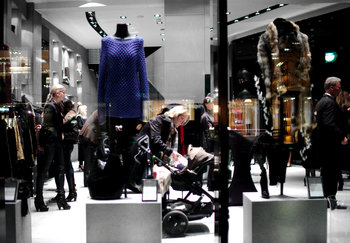

Functionality & Features
What a product or service can do and how it does it. For example, a baby stroller that can be quickly adapted to weather conditions such as rain, wind, snow or intense sunshine.Customer Experience
The end-to-end experience of discovering, buying and using a product or service. For example, the experience of unpackaging a product.Brand Image
Brand image is everything a customer thinks and feels about a brand. This is influenced by factors such as advertising, word of mouth and customer experience. For example, a customer may perceive one brand of soap as a luxury item and another as low quality.Social Status
A product or service that sends social signals such as a surfboard brand that's respected by locals on a particular beach.Identity
A customer who personally identifies with your products or services will place more value on them. For example, music that speaks to an individual.Convenience
Products that save time or make things easier such as a hotel directly beside a major attraction.Accomplishment
Products that give the customer a sense of accomplishment. In some cases, this is the opposite of convenience. For example, a customer may gain a sense of accomplishment from assembling furniture such that they end up placing more value on the product.Comfort
Products that increase the customer's sense of well being such as a hotel with comfortable beds.Safety
Products that feel safe such as a bank with a reputation for diligent management of security and financial resources.Visual Appeal
Products and environments that are visually appealing to the customer such as a hotel lobby that is perceived as visually stunning.Sensory Appeal
The taste, smell, sound and sensation of products or environments such as bread that smells good.Engagement
Products and services that are fun or stimulating to use such as a magazine that a customer reads cover to cover.Usability
Products and services that feel intuitive and easy to use. For example, a game that you can immediately play and learn as you go.Reliability
Reliability such as a product that is durable or service that always meets customer expectations.Productivity
A tool that allows the customer to produce more with their time such as a mobile device that runs fast.Efficiency
A product or service that consumes few resources relative to its output. For example, a sports car that goes a great distance on a single battery charge.Performance
The performance of a product or service such as a stock trading app that always loads quickly.Compatibility & Integration
Products that connect with other things. For example, a stock trading account that allows an investor to buy stocks on a foreign market.Values
A product or service that fits a customer's sense of right and wrong such as a cosmetic product that doesn't pollute the environment.Refinement
A product or environment that is perceived as well designed. For example, a mobile device that a customer views as a work of art such that it is almost priceless to them.| Overview: Value In Marketing | ||
Type | ||
Definition | The usefulness, worth and importance of products and services from the perspective of customers. | |
Related Concepts | ||

































